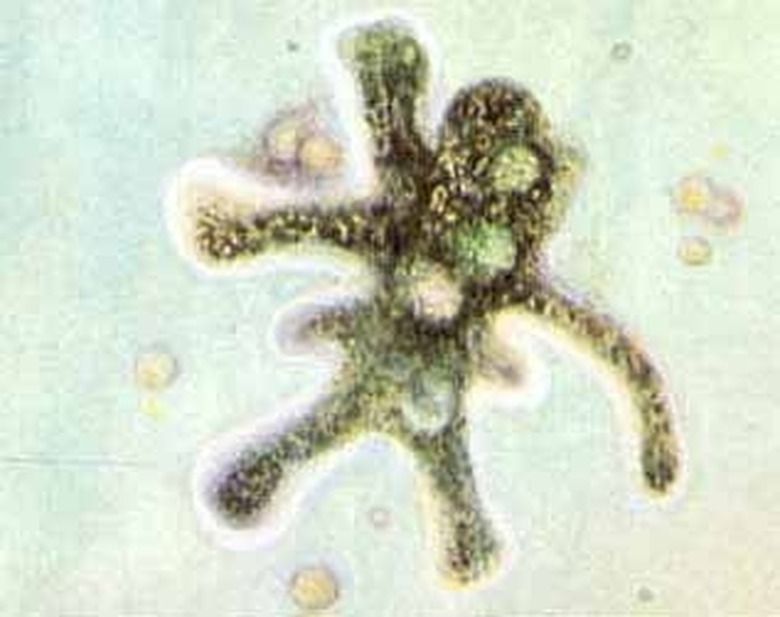How Does The Amoeba Reproduce?
Amoebas are tiny, single-celled organisms that live in moist conditions, such as fresh and salt water, soil, and within animals. They have a clear outer membrane and an inner grainy mass, or cytoplasm, containing the cells' inner structures. These are called organelles. Each amoeba contains one or more nuclei, according to its species. Amoeba reproduce asexually.
Asexual Reproduction
Asexual Reproduction
Unlike higher forms of life, amoebas do not need another individual's genetic material to reproduce. The nucleus of each cell contains the amoeba's genetic material. First, the genetic material replicates. Then the nucleus divides. This is called mitosis. Finally, the cytoplasm and outer membrane split in two. Each half contains a nucleus. The separate halves pull apart. Each new cell contains genetic material that is identical to the original. This process is called binary fission.
Midwife Amoebas
Midwife Amoebas
The final stage of amoeba reproduction is the point at which there is a narrow strip of material joining the two new cells. Scientists at the Weizmann Institute studying one type of amoeba found that sometimes the process stops at this stage. They were surprised to discover that often in this scenario, a third cell would come to help by forcing between the two cells, causing the tether to break. Further experimentation revealed that when reproducing cells are in distress they excrete a chemical that signals to nearby individuals.
Para-Sexual Reproduction
Para-Sexual Reproduction
Scientists at the University of Massachusetts argue that some amoeba may exchange genetic material through a number of methods. Others may have done so during periods of their evolutionary history. One of their arguments is that evolutionary theory shows that asexual reproduction is disadvantageous because it does not allow individuals to mix their genetic material with others. This means they cannot develop new characteristics that may be more suited to a changed environment. Species that reproduce only asexually should theoretically be short lived, yet the amoeba living today represent an ancient lineage.
Amoeba Behavior
Amoeba Behavior
Amoeba move by forming protrusions at whatever necessary part of the cell membrane and use these to propel themselves. They take food in at any point by enclosing it, and excrete waste products by forcing the material out. Oxygen diffuses into the organism through its membrane and waste gases diffuse out. Amoeba live best in constantly moist conditions. If their environment becomes too dry, they form a protective membrane to retain water. This ruptures when conditions become more favorable.
Cite This Article
MLA
Green, Jenny. "How Does The Amoeba Reproduce?" sciencing.com, https://www.sciencing.com/amoeba-reproduce-10005613/. 24 April 2017.
APA
Green, Jenny. (2017, April 24). How Does The Amoeba Reproduce?. sciencing.com. Retrieved from https://www.sciencing.com/amoeba-reproduce-10005613/
Chicago
Green, Jenny. How Does The Amoeba Reproduce? last modified August 30, 2022. https://www.sciencing.com/amoeba-reproduce-10005613/
